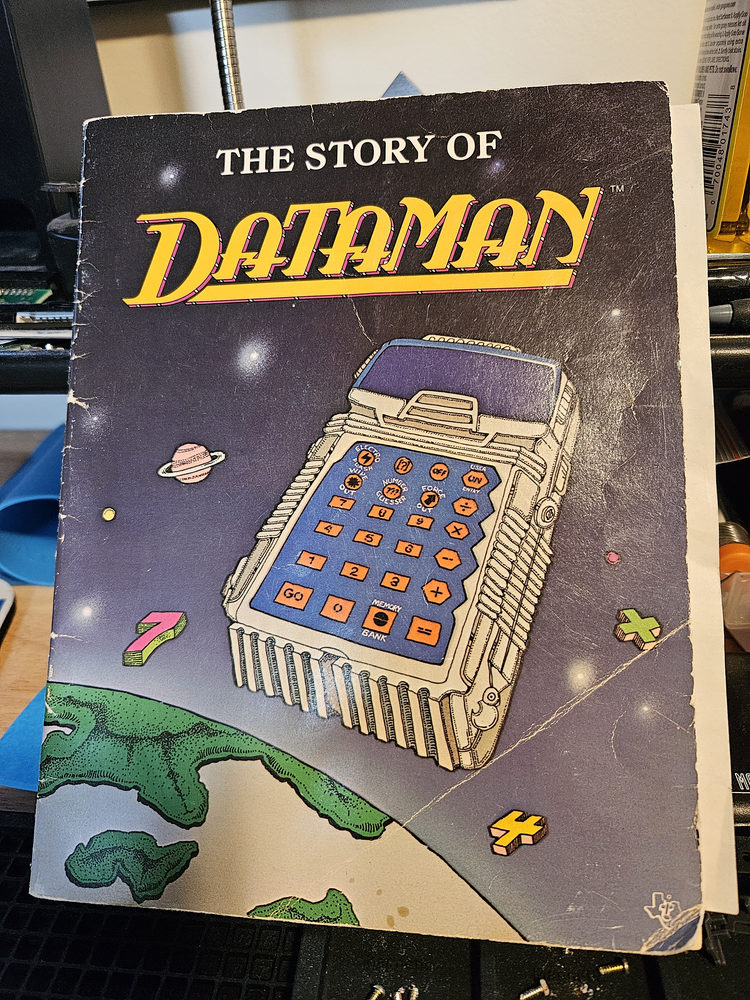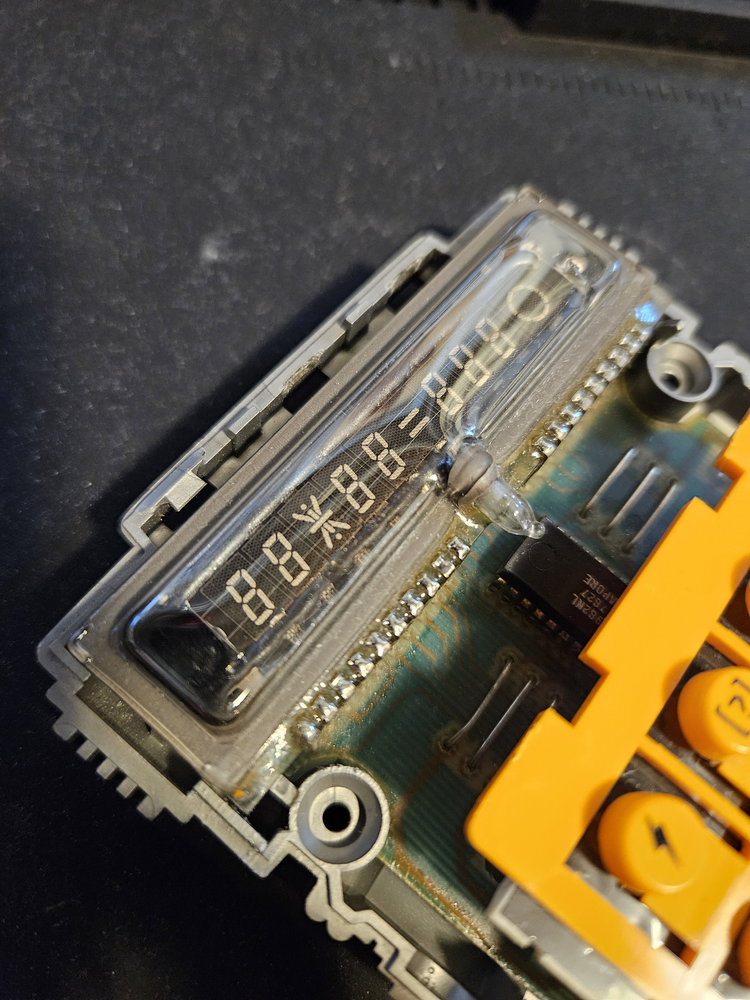The Dataman Cometh
Tags: #retrotech
1977 was a nerdy year. Apple shipped the first Apple II's, Star Wars premiered in theaters, Richard Ayoade was born...just lots of awesome things getting ramped up to improve the world, really. Perhaps most importantly, DataMan arrived on Earth to rescue us from the evil space wizard AntiMath.

The mission went as well as it could, all things considered.
DataMan was more of a handheld game than a calculator in the traditional sense. Marketed as an educational toy, DataMan was able to play a few games, but only some of them were pre-programmed, with the others described in the manual that had users taking advantage of some of DataMan's features. Some of these were intended to be played with a friend, such as the Starmath Race, encouraging students to use the memory bank to store problems, then pass to another student to solve against the clock. All of the games were designed to educate and entertain in a way that I would have probably found abhorrent as a kid, having not yet discovered my love of learning, but can certainly appreciate as an adult.
While it does boast an Answer Checker, the student could not simply enter 2+4, hit = and get 6 returned. Instead, they would need to enter the whole equation (so, 2+4=6) then DataMan would offer a little blinking light show on the display, or "EEE" if their answer did not jive. In essence, the student would need to do the work in their head or on paper first then use DataMan to see if they got it right, which would have made every one of my grade school teachers perfectly happy as they sucked their teeth at common calculators turning us all into lazy number bums because we'll never be walking around with calculators in our pockets all the time, now will we?
Enter the evil and possibly misunderstood space wizard, AntiMath, scourge of numbers and nemesis of DataMan.

One of the most interesting parts of this little calculator game is the lovingly crafted manual and backstory that went with it. DataMan is described as a tiny robot with "the brain of a computer and heart of a friend," which has to be one of the cutest things I've ever read in a manual. What's interesting about the manual itself is that it left me wanting more when it came to DataMan lore.
We are never told the name of DataMan's home planet where Commander NumberFun created him, or why DataMan just happened to be passing by our solar system when he noticed the children of Earth struggling with math tables, evidence that AntiMath was near. AntiMath's motives are never explored, leaving a reader (okay, mostly me) to question why he hates math so much and what he stands to gain by making the universe bad at it, which seems to be his only purpose. Honestly, if anyone is looking for material to expand on with a reboot in graphic novel form or something, here's your chance.
In fact, I've scanned my copy of the DataMan manual in its entirety. You can find a PDF copy in the links below. There was also a pretty rad iron-on decal to make your own t-shirt in the manual, but mine is in rough shape. I did try to scan and photograph it, but it's too difficult to see with the protective film on and one edge is completely ruined. If I ever find a way to reproduce it, I will link that here.
As far as I can tell, the Authors of the manual are not listed anywhere in it, but the presentation has some arguably strong parallels with the old Usborne computer books for kids. The first 18 pages were written for younger readers, whereas the remainder of the book was a collection of product notes for parents or educators and the usual warranty information from the time period. The illustrations are definitely worth a look, some featuring full page game boards for some of DataMan's offerings, including Space Ball, a baseball-inspired romp that is somehow more tedious than watching an actual baseball game, and Orbit Math which, sadly, is not about orbital mechanics but instead a masochistic race toward the Sun, something humans are generally discouraged from doing.
DataMan's funky ideas about fun aside, the Authors must be commended for their effort to merge practice and play in a subject that represented a very bleak and tiresome point in so many school days for so many people, despite our poor teachers' best efforts. Maths are fun to the few, not the many, not by any stretch. I personally did not start appreciating numbers until adulthood as I learned quickly how easy it was to be led astray with bad options or accidentally commit minor tax fraud when you could not evaluate simple statistics or lacked any understanding of finance. I'm just spit-balling, but maybe that's why AntiMath is the villain, created to embody the nebulous idea that a number-dumb culture is easier to control. It would be wild to track down the authors and ask them about this, among other things.

Seeing something like a calculator manual from the late 70's try to cut through the apprehension of practicing multiplication tables is refreshing, to say the least. The manual, in my opinion, is the soul of DataMan, since there isn't much to behold inside the unit itself, save for the seemingly underappreciated TMC1982 chip, which, aside from the custom Vacuum Fluorescent Display and a contact pad for the buttons, is about all that's inside the case. I suppose that's why I decided to not waste a lot of words diving into the tech inside DataMan since that's already well documented on Datamath.org (linked below).
A secret bit of fun I have with finding some of these old gadgets with original paperwork is people having left little clues from the past. My manual was signed by a "TN Frick" at the back, whose first name was presumably "Tom," since that's what he also wrote on the receipt tucked inside. According to Tom's note on the receipt, this was purchased for Brian, who we can only assume was his son or nephew. This DataMan was a gift, and not a cheap one at that. The 1980 retail price for this was $21.88 USD, which comes out to a wallet whipping $87.50 in today's insanely inflated dollars.
Thankfully, my unit needed little cleaning. There was no corrosion on the battery contacts, which is extremely unusual for something from this era, as people tended to store things with forgotten batteries left inside. My guess as to how the iron-on got damaged is being stored near a heat source, just enough to cause the iron-on decal to shrinky-dink on the closest edge. It otherwise looks like nobody ever tried to use or apply it.
For that, I will be looking for a digital artist to try and recreate it because boy, I sure would like a DataMan t-shirt.